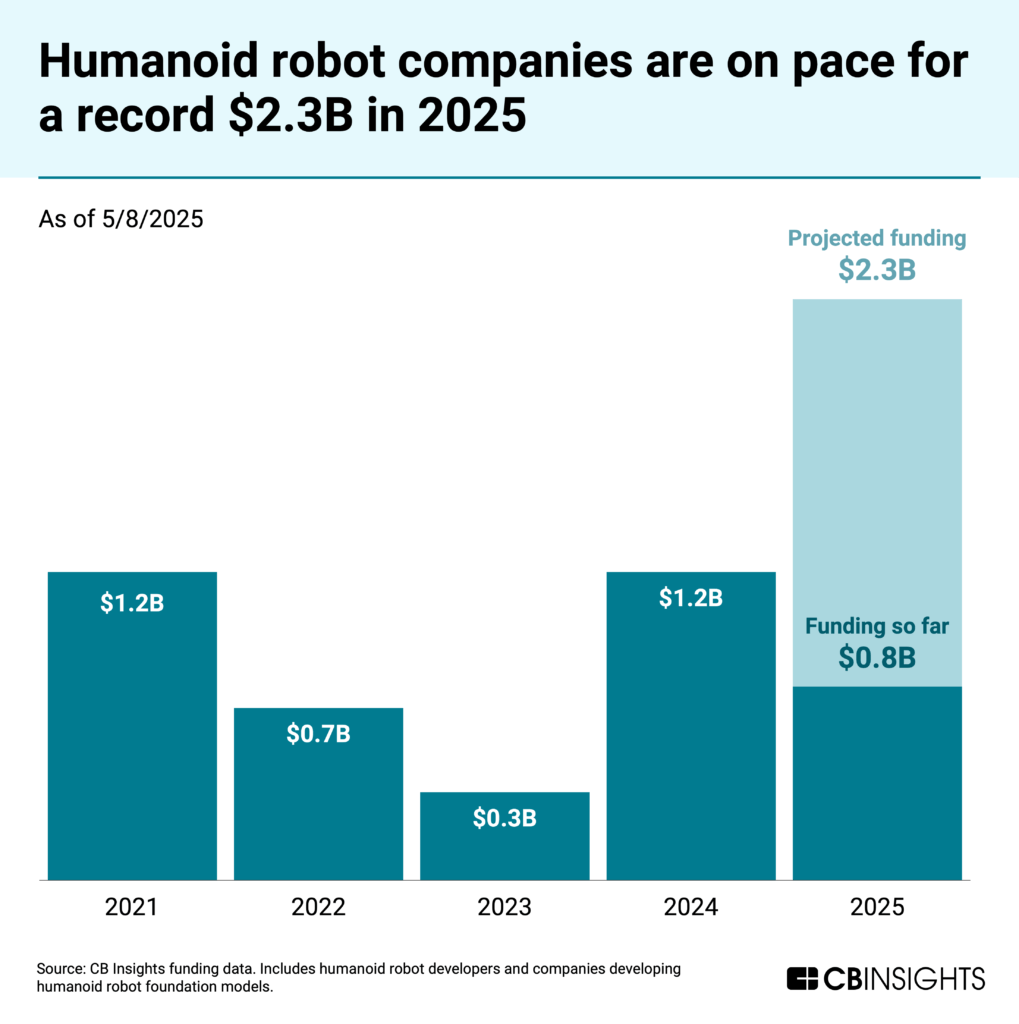We analyze the impact of physical AI on the humanoid robot landscape to help enterprises, industrial firms, and investors capitalize on this new computing platform.
The AI landscape is evolving from digital domains to the physical world.
After generative AI transformed content creation with large language models and AI agents enabled autonomous decision-making with predictive systems across enterprises and industrial applications, humanoid robots represent the next frontier as the embodiment of physical AI.
The humanoid market secured a record $1.2B in funding in 2024 and is projected to reach $2.3B in 2025, according to CB Insights data.

Partnerships between startups, tech leaders, and manufacturers are accelerating the humanoid market by establishing commercial pathways. Some companies are already building factories to support mass production.
![]() Dive into the industrial humanoid robot developers market report
Dive into the industrial humanoid robot developers market report
Below, we break down 5 key trends shaping the rise of humanoid robots:
Physical AI is fueling the emergence of humanoids.
Big tech is laying the foundation for humanoid robots.
AI development pathways are diverging.
Companies are integrating humanoids into the broader automation ecosystem.
Commercialization is intensifying competition between the US and China.
1. Physical AI is fueling the emergence of humanoids
Physical AI is enabling a new generation of humanoid robots to sense their environments, learn from experience, and execute precise movements — helping them navigate complex situations and better collaborate with humans.
This progress has sparked investor interest, creating a new class of highly valued startups across industries like manufacturing, warehousing, healthcare, and home assistance.
Figure and Skild AI reached valuations of $2.7B and $1.5B, respectively, despite both companies launching less than 3 years ago. Similarly, Apptronik raised a $403M Series A funding round in February 2025, though its exact valuation remains unconfirmed.


